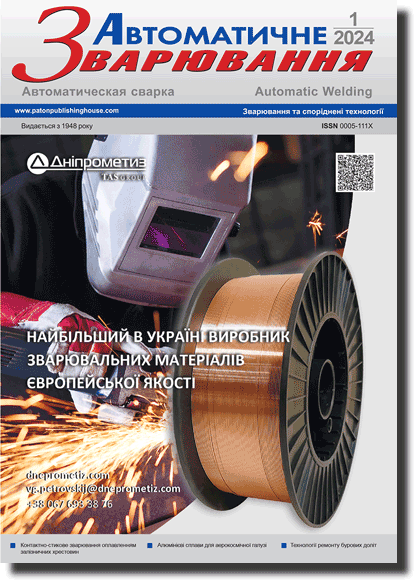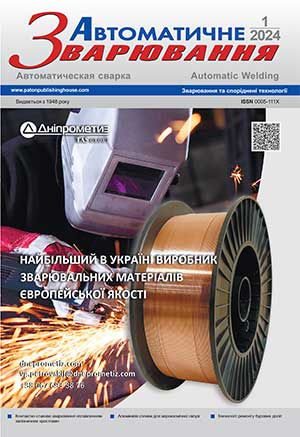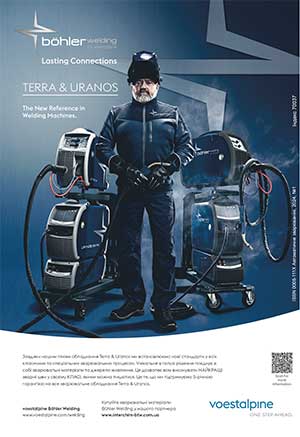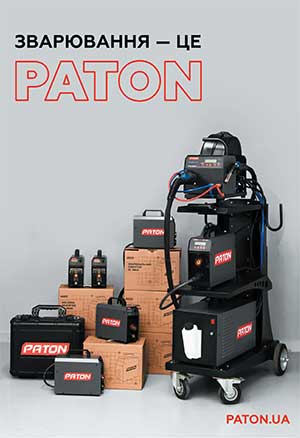| 2024 №01 (04) |
DOI of Article 10.37434/as2024.01.05 |
2024 №01 (06) |
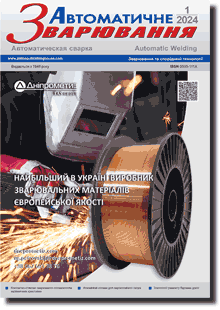
"Avtomatychne Zvaryuvannya" (Automatic Welding), #1, 2024, pp. 43-50
Construction of an analytical model of multifractal set that reflects the influence of structural component fractal parameters on additive metal mechanical properties
V.V. Holovko1, O.O. Shtofel2, I.V. Krasikov3
1E.O. Paton Electric Welding Institute of the NAS of Ukraine 11 Kazymyr Malevych Str., 03150, Kyiv, Ukraine. E-mail: office@paton.kiev.ua2National Technical University of Ukraine “Igor Sikorsky Kyiv Polytechnic Institute”. Beresteyskiy Ave., 37, 03056, Kyiv, Ukraine.
3Frantsevich Institute for Problems of Materials Science of NASU. 3 Krzhyzhanovskoho Str., 03142, Kyiv, Ukraine.
Growing use of high-strength low-alloy steels in additive metal structure manufacture is accompanied by an increase in the requirements to the reliability of prediction results in the “composition-structure-properties” system. Application of fractal analysis methods allows establishing the metal structure characteristics by numerical parametrization, the metallographic analysis of which gives only a qualitative assessment. The paper shows the possibilities of fractal analysis for numerical evaluation of such characteristics of additive metal structure as the total length of grain boundaries, distribution of dislocations at the grain structural boundaries, distribution density of nonmetallic inclusion accumulations at a distance less than 5r from one another. Shown is the possibility of numerical parametrization of the structure and nonmetallic inclusions in the “structure-fractal-properties” system for predicting the mechanical properties of additive metal of high-strength low-alloy steel type. 7 Ref., 7 Tabl., 9 Fig.
Keywords: additive metal, metallographic analysis, fractal analysis; metal structure; nonmetallic inclusions; mechanical properties.
Received: 20.10.2023
Received in revised form: 01.12.2023
Accepted: 18.12.2023
References
1. Brown, C.U., Donmez, A. (2016) Microstructure Analysis for Additive Manufacturing: A Review of Existing Standards. https://doi.org/10.6028/NIST.AMS.100-32. Bhadeshia, H., Honeycombe, R. (2017) Seels. Microstructure and Properties. Fourth edition. Publ. by Elsevier Ltd. All rights reserved. ISBN: 978-0-08-100270-4.'); ?>
3. Bolshakov, V.I., Dubrov, Yu.I., Kasyan, O.S. (2010) Microstructure of steel as the determinant parameter in prediction of its mechanical characteristics. Dopov. NANU, 6, 89-96 [in Russian].
4. Bolshakov, V.I., Volchuk, V.N., Dubrov, Yu.I. (2017) Topological and fractal invariants of structure for evaluation of metal quality. Dopov. NANU, 4, 42-48 [in Russian]. https://doi.org/10.15407/dopovidi2017.04.042
5. Sinha, S., Kim, D-I., Fleury, E., Suwas, S. (2015) Effect of grain boundary engineering on the microstructure and mechanical properties of copper containing austenitic steel Mater. Sci. Eng. A., 626, 175-185. https://doi.org/10.1016/j.msea.2014.11.053
6. Zhang, I., Lu, C., Tieu, K. (2016) A review on atomistic simulation of grain boundary behaviors in face-centered cubic metals. Computer Mater. Sci., 118, 180-191. https://doi.org/10.1016/j.commatsci.2016.03.021
7. Krasikov, I.V. et al. (2022) Computer program Faculator 2. Certificate on registration of registration of copyright for the work, 115438, Ukraine, 25.10.2022 [in Ukrainian].
Advertising in this issue:
To order the electronic version of the paper:
V.V. Holovko, O.O. Shtofel, I.V. KrasikovConstruction of an analytical model of multifractal set that reflects the influence of structural component fractal parameters on additive metal mechanical properties
Automatic Welding №01 2024 p.43-50
The cost of article (pdf): 13 $, 12 €, 150 UAH (1 copy. )
fill in the form below:
The cost of subscription/purchase order journals or individual articles
| Journal/Currency | Annual Set | 1 issue printed |
1 issue |
one article |
| TPWJ/USD | 384 $ | 32 $ | 26 $ | 13 $ |
| TPWJ/EUR | 348 € | 29 € | 24 € | 12 € |
| TPWJ/UAH | 7200 UAH | 600 UAH | 600 UAH | 280 UAH |
| AS/UAH | 1800 UAH | 300 UAH | 300 UAH | 150 UAH |
| AS/USD | 192 $ | 32 $ | 26 $ | 13 $ |
| AS/EUR | 180 € | 30 € | 25 € | 12 € |
| SEM/UAH | 1200 UAH | 300 UAH | 300 UAH | 150 UAH |
| SEM/USD | 128 $ | 32 $ | 26 $ | 13 $ |
| SEM/EUR | 120 € | 30 € | 25 € | 12 € |
| TDNK/UAH | 1200 UAH | 300 UAH | 300 UAH | 150 UAH |
| TDNK/USD | 128 $ | 32 $ | 26 $ | 13 $ |
| TDNK/EUR | 120 € | 30 € | 25 € | 15 € |
AS = «Automatic Welding» - 6 issues per year;
TPWJ = «PATON WELDING JOURNAL» - 12 issues per year;
SEM = «Electrometallurgy Today» - 4 issues per year;
TDNK = «Technical Diagnostics and Non-Destructive Testing» - 4 issues per year.





